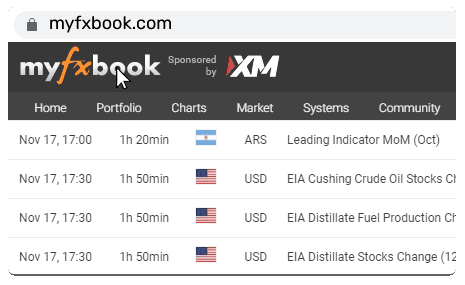Insights into the BoJ's Strategy and Global Market Implications

This year, global central banks have been pursuing divergent monetary policies. The Bank of Japan (BoJ), however, has kept a relatively low profile in global markets since it adjusted its policies back in March. A significant move came in early May when Japan's Ministry of Finance spent a whopping $62 billion to prevent the USD/JPY exchange rate from going above 160. This action was crucial in limiting the strength of the US dollar compared to currencies in the Asia-Pacific region.
What Happens When the Japanese Yen Weakens?
The weakening of the Japanese yen (JPY) is a widely discussed topic in global financial circles. However, the impact of Japanese bond yields is often overlooked. There's a clear risk that if the yields on Japan's 10-year government bonds (JGBs) reach 1.5%, it could disrupt bond markets in Europe and the US. This potential disruption needs to be considered as the BoJ prepares for its upcoming policy decisions. It's expected that the BoJ will continue to scale back its quantitative easing efforts, possibly halting bond purchases altogether at its meeting on June 14.
What the Markets Expect and What Clients Are Doing
Market expectations suggest there's a slight possibility of another interest rate hike, with financial instruments like overnight indexed swaps indicating a potential tightening of 22 basis points by the end of the year and a 50% chance of a 15-basis point hike in September. A decision to hold rates steady would likely result in a weaker yen. Data on international capital flows shows that investors are betting against the yen, increasing their positions similarly in currencies like the Australian and New Zealand dollars, while buying in Swedish Krona (SEK) and Swiss Franc (CHF) seems to offset these short positions.
BoJ's Bond Purchases and Their Impact on Markets
The BoJ is expected to reduce its purchases of JGBs and implement a clearer plan to shrink its balance sheet. After maintaining steady bond purchases in April following the March rate hike, the BoJ has since scaled back its buying activities. Concerns about the functioning of the JGB market aren't as pronounced as they have been in the past. While the long-term correlation between 10-year JGBs and their counterparts in the US and UK stands at 0.38%, recent shorter-term correlations have been much lower at 0.15% for the US and 0.2% for the UK. Europe's reliance on Japanese financial flows is minimal, with a long-term correlation of just 0.19% with German Bunds.
Japanese Banks and Their Foreign Investments
Japanese domestic banks, particularly major banks, play a crucial role due to their substantial investments in foreign bonds and local lending. Although Japanese bank stocks saw a sharp rise in 2023, their growth has slowed in 2024, posing another challenge for the BoJ. Factors like the US term risk premium, the Japan basis, and the shape of the Japanese yield curve are critical considerations. Foreign currency-denominated assets contribute significantly to the earnings of major banks, with these institutions potentially facing reduced leverage due to their holdings in US and UK bonds. Japan's substantial Treasury holdings also factor into risks associated with the yen.
Potential Adjustments in the Japanese Yen
I anticipate a potential 20% decline in the yen against the US dollar, bringing the USD/JPY exchange rate to 130 within the next year. The weakness of the yen is influenced by various factors beyond just BoJ policies and US bond purchases, including the role of gold and its correlation with the yen. This relationship reflects concerns about fiat currencies and geopolitical tensions. Additionally, diversification of global central bank reserves away from the Euro and US Dollar in favour of currencies like the Australian, Canadian, and Chinese Yuan also impacts the yen's value.
BoJ's Strategy and Its Effects on the Market
Last month, the BoJ purchased only ¥4.5 trillion ($29 billion) worth of government bonds, marking the lowest amount since March 2013. The gradual reduction of bonds from the BoJ's balance sheet, many with durations over 8 years, is crucial to the yield curve. BoJ Governor Ueda aims to let market forces determine long-term interest rates. In April, the BoJ maintained a monthly bond buying pace of ¥6 trillion ($38.7 billion) to prevent market disruptions following its decision in March to end its massive stimulus program, which was adjusted in May and faces further changes in June.
Debating the Reduction in Bond Purchases
The BoJ's upcoming decision will likely involve discussions on how to taper bond purchases smoothly to avoid market disruptions. Whether 10-year JGB yields reach 1.0% or 1.5% matters less than ensuring successful bond auctions and managing the pace of bond purchases. The increasing cost of servicing government debt and the BoJ's negative earnings are significant concerns. The health of Japanese banks and the country's economic growth are also pivotal factors. Financial conditions are under scrutiny, particularly the relationship between equities and the yen, especially with foreign yen hedges influenced by Ministry of Finance interventions and the undervaluation of the yen.
Long-Term Consequences
Foreign investors historically hedge about 20% of their exposure to Japanese equities against currency fluctuations. While the correlation between USD/JPY and Japan's Nikkei index has been notable, it has recently decreased. The BoJ is less concerned about negatively impacting the stock market or funding costs by raising interest rates. The average rate according to Japan's baseline Taylor Rule over the last 30 years is 1.85%, while the current rate stands at 4.5%. With higher wage agreements, a closed output gap, and inflation above the 2% target, there's an expectation for higher BoJ rates. The weakening yen also brings imported inflation concerns, urging the BoJ to act.
The BoJ's bond purchasing operations, known as Rinban, significantly influence yen movements. BoJ officials plan to gradually reduce the central bank's extensive portfolio, with annual maturities of approximately ¥70 trillion ($447 billion) expected in the coming years. Even small adjustments to the purchase schedule could tip the portfolio into decline, affecting the yen and broader markets alike.
Insights Inspired by BNY Mellon (iFlow): Credit to Their Analysis for Shaping Some Aspects of This Text
This content may have been written by a third party. ACY makes no representation or warranty and assumes no liability as to the accuracy or completeness of the information provided, nor any loss arising from any investment based on a recommendation, forecast or other information supplies by any third-party. This content is information only, and does not constitute financial, investment or other advice on which you can rely.



















